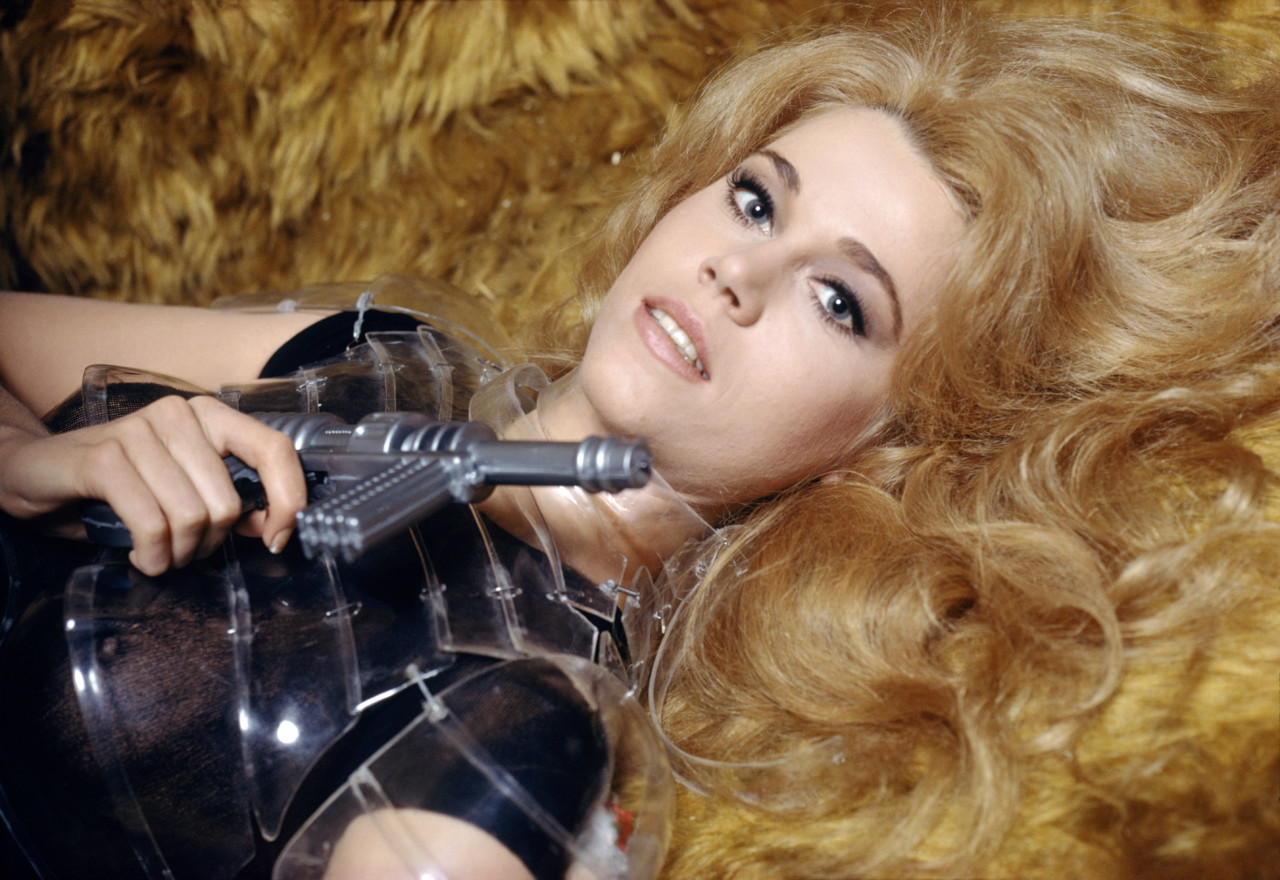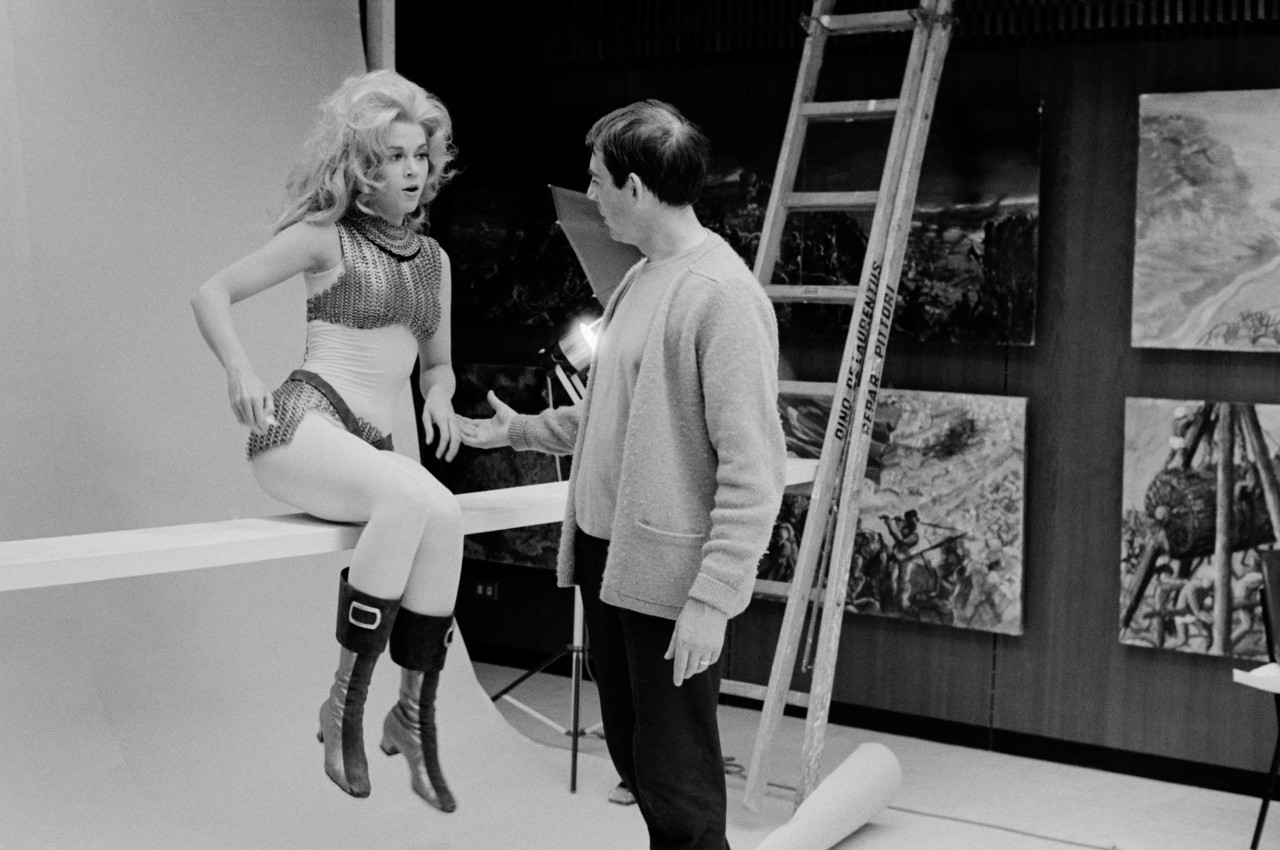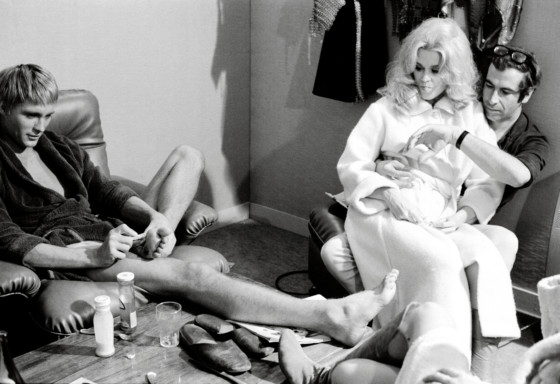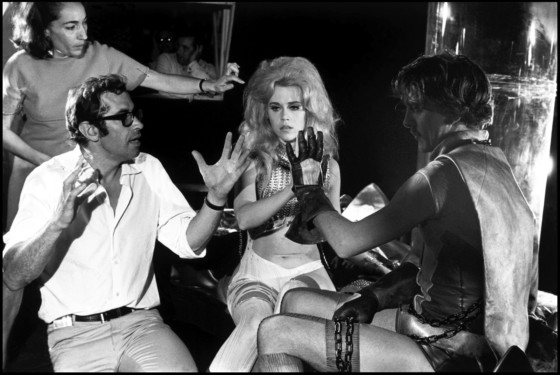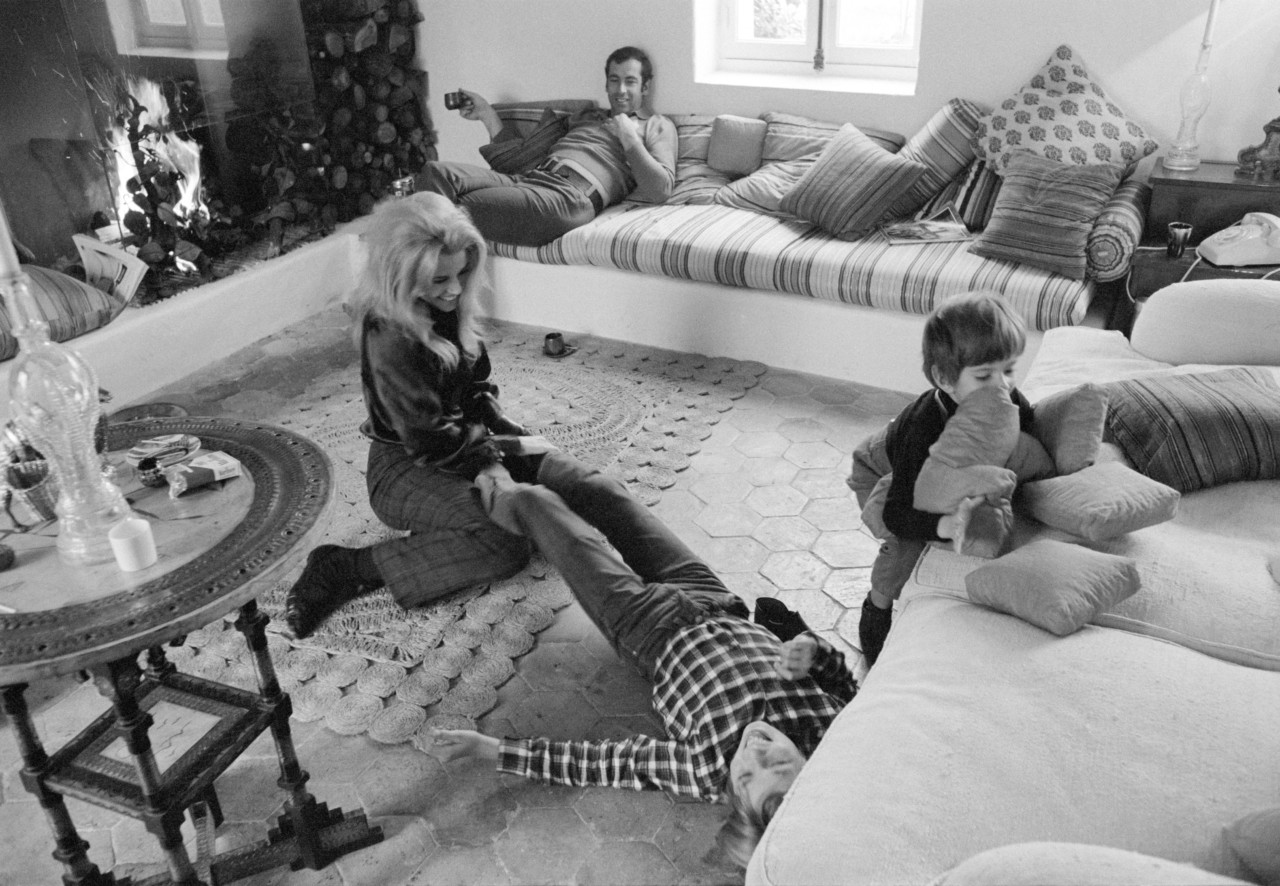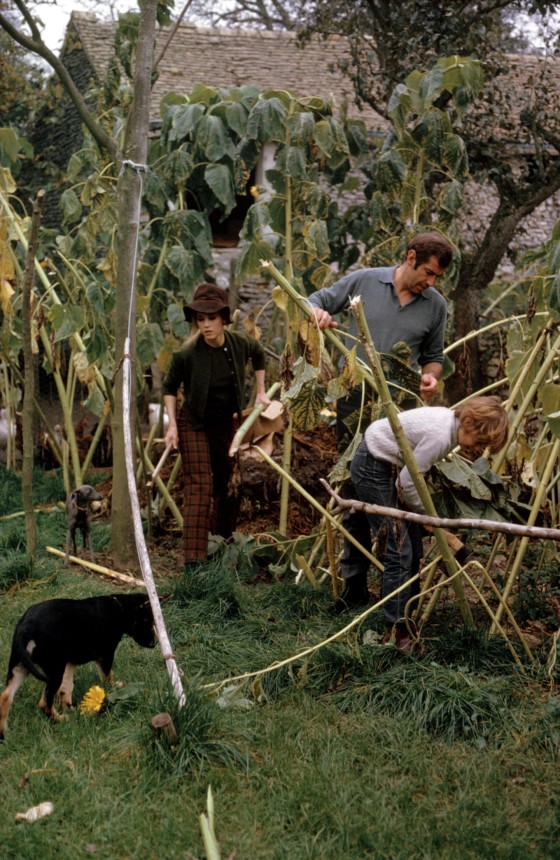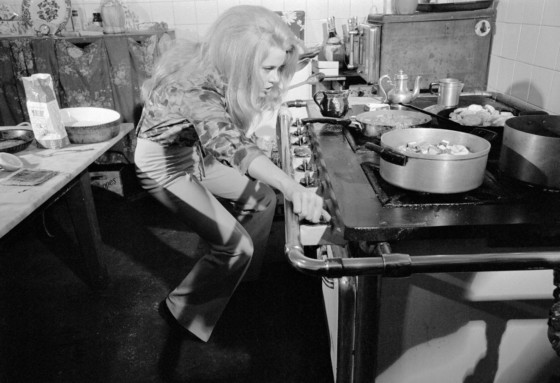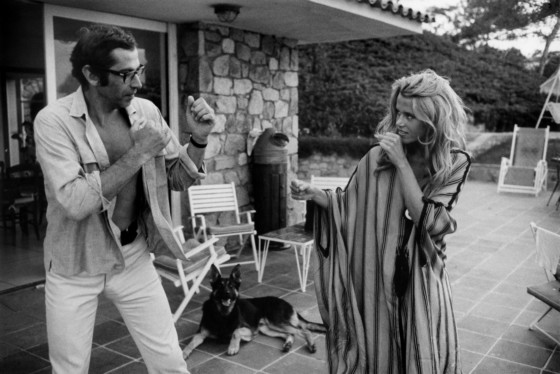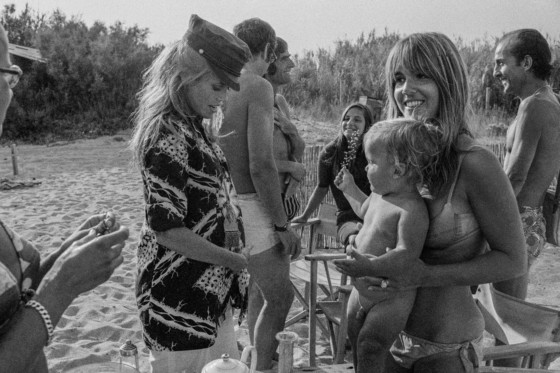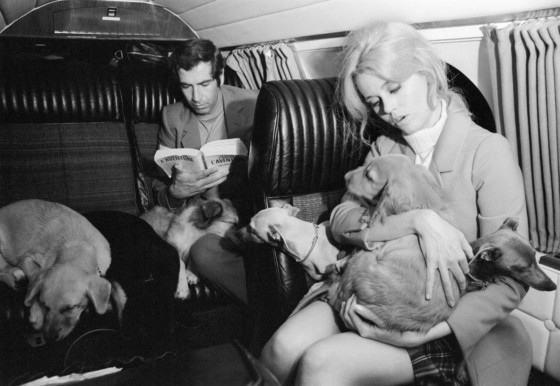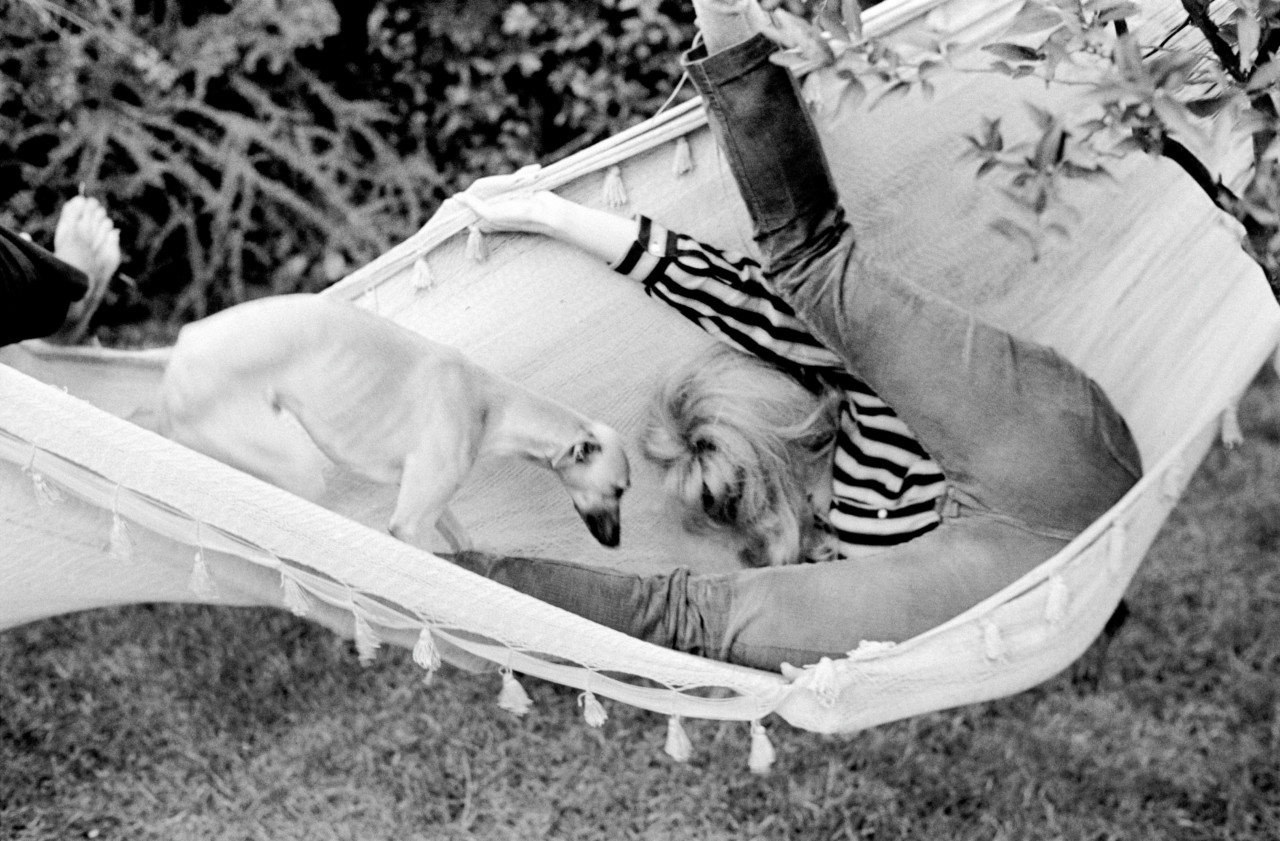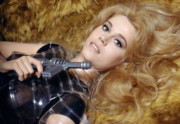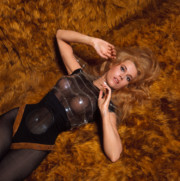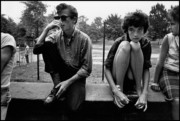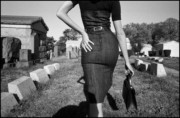Photographing The Other Jane Fonda
David Hurn on why friendship was the key to capturing the real woman behind the Barbarella bombshell
An actor’s relationship with their own image involves a dichotomy, requiring both surrender and control. On the one hand, to perform well in their roles they must override their ego in order to fully inhabit the character they are playing, while on the other, particularly for women actors, the currency placed on looks can mean they are hyper vigilant about how they come across in the media. So, for photographers to create something more meaningful than highly managed vanity shots, they may come up against a battle of wills, which calls for charm and tact to navigate.
Magnum photographer David Hurn has spent his career creating warmly candid photographs of both celebrities and ordinary people, who have shared glimpses of their lives with him. His secret is not a lens, a lighting set-up or a particular camera, but a skill for building a genuine trust with his subjects that puts them at ease. As Hollywood actress Jane Fonda turns 80-years-old, David Hurn recalls fondly his memories of working with her over years, and how he built a particularly special bond with the two-time Oscar winner.
"I remember almost from the word go we were very close"
- David Hurn
“I suppose it’s their business to look good,” says David Hurn, empathizing with actors’ plight, but adds, “What to me is slightly amusing, is that I am not absolutely convinced that they know what the best pictures of themselves are.” Hurn came across a classic case of this during his first interactions with Jane Fonda on the Italian set of the 1968 film Barbarella, which was directed by Fonda’s then-husband, the French director Roger Vadim.
Hurn arrived on the production at the request of his friend Tom Carlie, who was the publicist on the film. As per the agreement, Hurn would show Fonda his contact sheets and she would mark off which images she was vetoing. “Bless her,” says Hurn, “she is a great actress but not the best editor of her own pictures. I had learned you do not argue with these people, so I simply put the contacts away, kept them for a week or so, and shot some more pictures.”
Later, when he came back with more pictures, Hurn added a blank version of the previous week’s contact sheets, only for the actress to veto completely different images. “I said, ‘Look, you’ve marked these two identical sheets up differently, isn’t this silly? Wouldn’t it be better if you just had some trust in me and let me get on and do the editing?’ and it was fine.”
“I mean obviously we all have insecurities, sometimes they come out at funny points, and this was her way of feeling she had some control. The second she felt some form of trust she was very happy to let go.”
"The second she felt some form of trust she was very happy to let go"
- David Hurn
Fonda’s relationships with directors is similar; when she trusts the directors, she submits fully and produces her best work. The actress credits the success of Klute (1972), for which she won the Best Actress Oscar, to the painstaking craft of director Alan Pakula. She responded to his commitment in kind, devoting herself, body and soul, to her role as New York prostitute Bree Daniels.
"If she is in a movie and doesn’t think the person is that good, she sort of does it herself"
- David Hurn
“If she is in a movie and doesn’t think the person is that good, she sort of does it herself,” says Hurn. There are a number of legendary Hollywood whispers Hurn could be referring to, but most notable is the production of the 1973 movie A Doll’s House, directed by Joseph Losey. According to Losey, Jane Fonda and co-star French actress Delphine Seyrig, an outspoken feminist, had discussed sexism in Losey’s interpretation. They felt that the male characters had been built up from the original Henrik Ibsen play, on which the movie was based, and the female characters pared down. The pair would would hole up together every night to make notes about the changes they wanted to the script in the morning, and Fonda would present Losey with these notes.
Fonda acknowledged this in an interview with The Village Voice. “Every night we would work together, my gaggle of feminists,” she said. “We were trying to get the most important things back into the script. What I wanted to do was to show from my years in France that women can have an external façade that seems frivolous and superficial but is actually serious. Nora (Fonda’s character) was a vital, intelligent woman waiting to explode.”
Hurn fulfilled his assignment by taking the classic in-costume portraits of Fonda as Barbarella, images that would become iconic and are still, to this day, presented to her by fans hoping for an autograph. But his most insightful work was created off set, or at least at the peripheries, where he captured Fonda laughing and joking with the crew.
As Fonda and Hurn’s friendship grew, the photographs became more candid and relaxed. No longer Barbarella, Fonda’s personality – vibrant and fun-loving – came through. “I remember almost from the word go we were very close,” recalls Hurn, “and then we obviously got closer. And then when you have that kind of trust, you can really start to do something better than normal. Photography is a funny business, most of the time you are trying to get just that little bit better. It’s difficult to analyze why.”
According to Hurn, friendship makes better pictures. “Taking the pictures is easy,” he says, “these people” – actors, models, the beautiful and the famous – “are usually, visually, very attractive and they have strong personalities, but you have to get to the point where they stop feeling like they are being photographed. Most pictures you see of these people, it’s obvious that they know they are being photographed. The only way you can do something different from that is to get them so relaxed it doesn’t look like they’ve been photographed.”
"It’s the only picture that I have ever got as a sign from her, that we were close"
- David Hurn
Hurn photographed Fonda at home, catching moments of spontaneity and intimacy. His favorite shot shows her in the swirl of a hammock with her legs in the air, as one of her dogs leaps into the shot. “The thing I love about that photograph is that you can’t take that sort of picture of a big, big movie star unless that person has a lot of trust in you. The extraordinary thing about the pictures Eve Arnold did of Marilyn Monroe, and Joan Crawford even more so, is that they display an intimacy that you wouldn’t expect with that person. So that is really what I was, tongue-in-cheek, saying to Jane when we were reunited for a BBC documentary: that this, to me, is a precious picture. It’s the only picture that I have ever got as a sign from her, that we were close, and it was fun. It’s a nice picture.”


